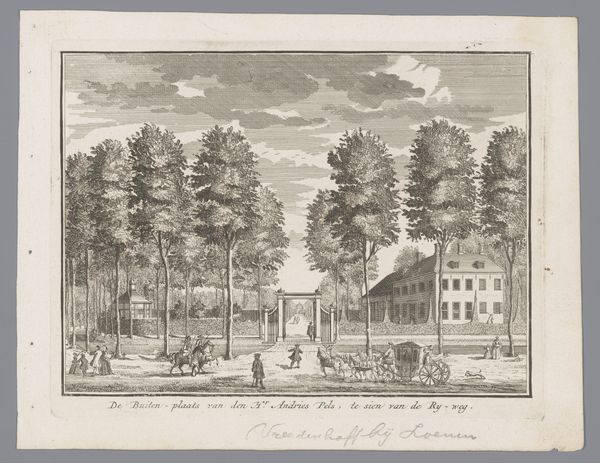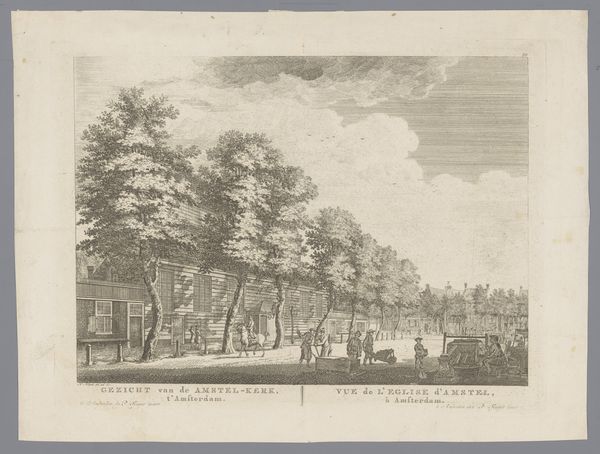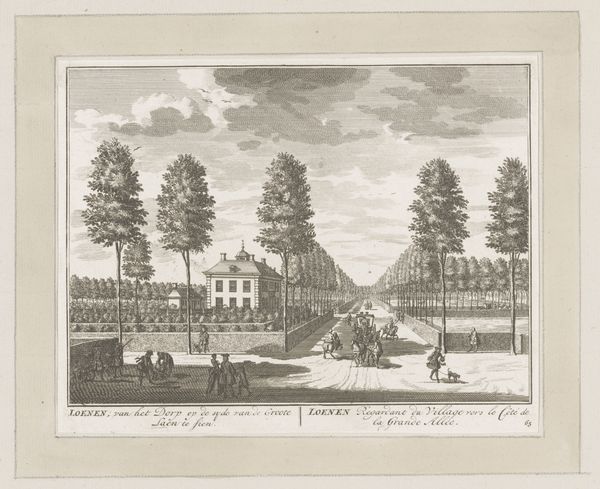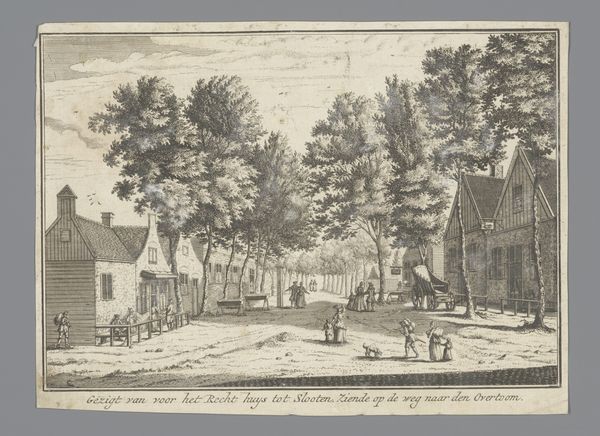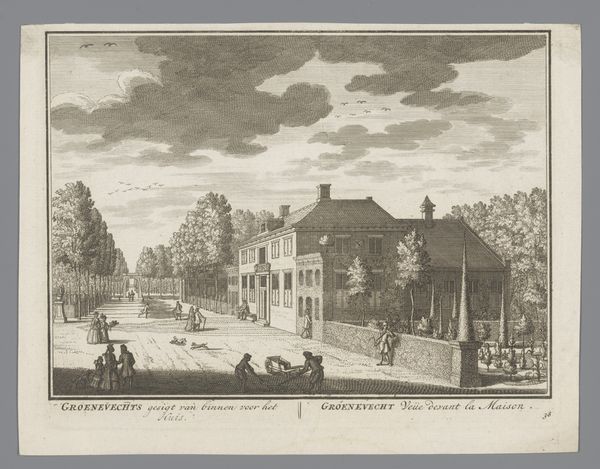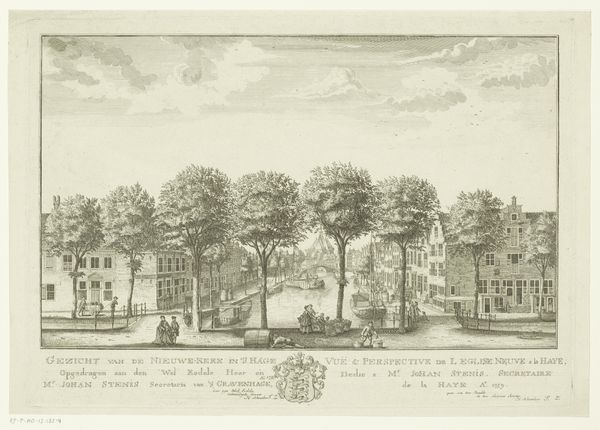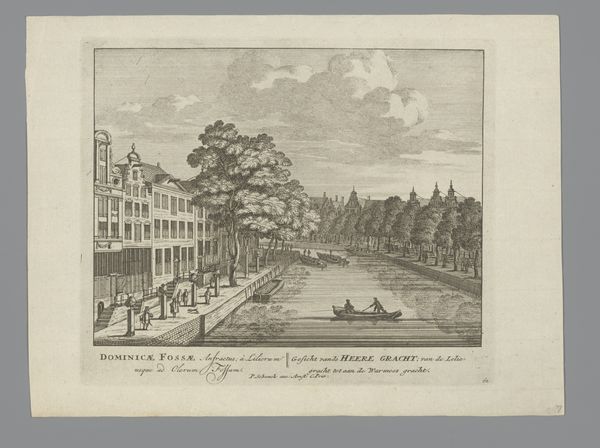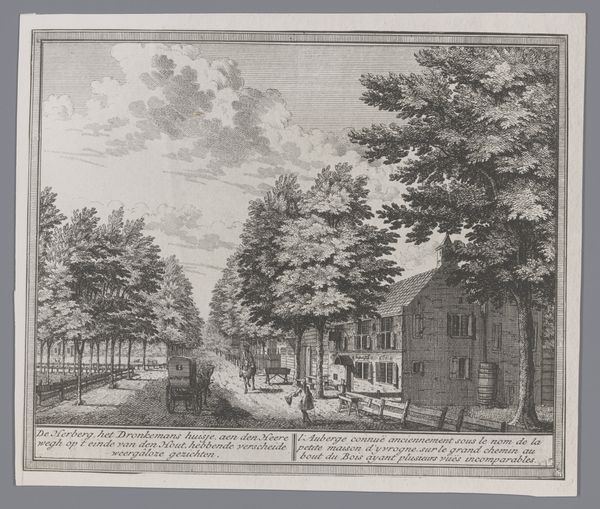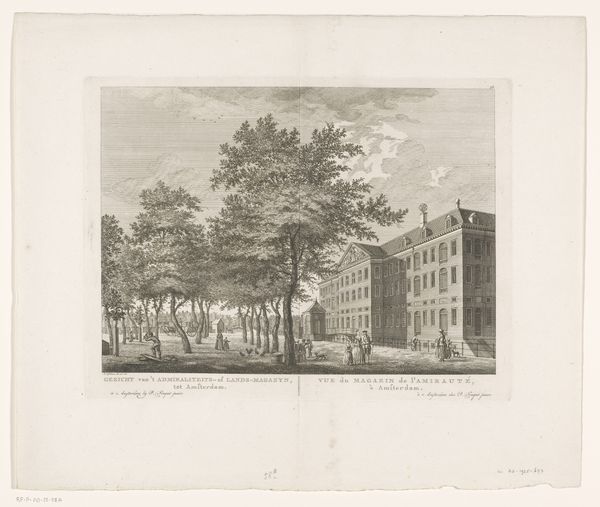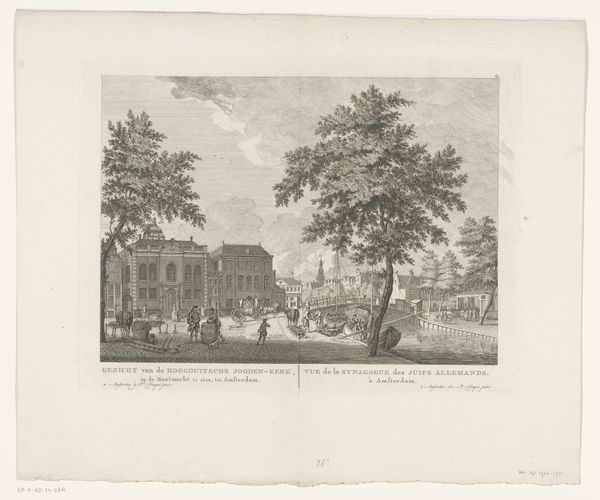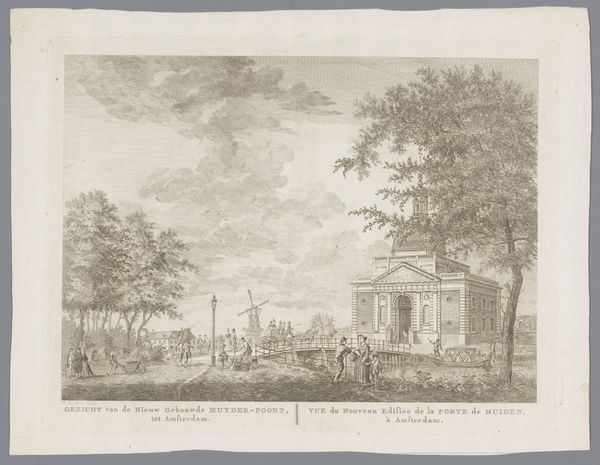
print, etching, engraving
#
baroque
# print
#
etching
#
landscape
#
cityscape
#
genre-painting
#
engraving
Dimensions: height 156 mm, width 206 mm
Copyright: Rijks Museum: Open Domain
Curator: This engraving, "View of the Vreedenoord Estate" by Daniël Stopendaal, circa 1719, presents a slice of Dutch life, doesn't it? What strikes you most about it? Editor: Well, it’s quite detailed! It feels almost like a stage, with the trees framing the scene. What interests me are the figures, though—there's a clear distinction between those arriving by carriage and those on foot. How should we interpret that distinction? Curator: Precisely. It’s a snapshot of a society deeply structured by class. The grand estate, Vreedenoord, visually asserts the wealth and power of the owner, Andries Pels. The carriage signifies elite status and mobility, a privilege not afforded to everyone. The figures on foot are likely workers or those of lower social standing, their presence vital to maintaining the estate yet positioned outside the sphere of opulence. Does this arrangement evoke any questions about the dynamics of labour or the visual representation of privilege? Editor: Yes, absolutely. It seems to celebrate the lifestyle of the wealthy elite, almost glossing over any social disparities. Were there dissenting voices critiquing this at the time? Curator: Absolutely. While this image seemingly promotes a vision of harmonious hierarchy, understanding the Dutch Golden Age also requires acknowledging the emergence of radical thinkers who questioned these very structures. Consider the social and economic inequities arising from colonialism and the slave trade. Stopendaal's image offers a carefully constructed view, which doesn't allow much opportunity for these uncomfortable issues to enter into it. Editor: It is fascinating to consider those complexities. This piece seems less like a neutral observation and more like an intentional portrayal of power. Curator: Precisely. Recognizing these nuances allows us to view the artwork as an active participant in the social discourse of its time. Art isn't just a reflection, it's also an instigator, which is just as important. Editor: I never considered the power of the lack of visibility before. I’ll be looking at art a little differently now. Thanks!
Comments
No comments
Be the first to comment and join the conversation on the ultimate creative platform.
